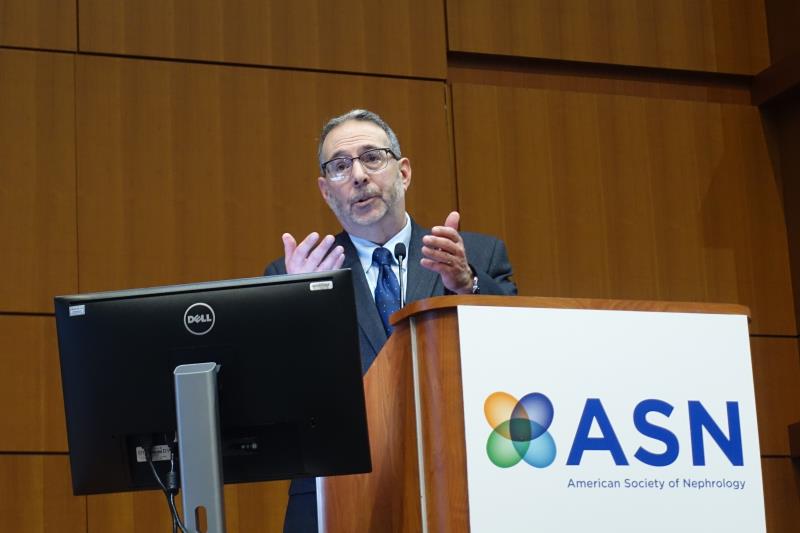
Obinutuzumab may be a safe and effective way to control proliferative lupus nephritis, according to the results of the NOBILITY trial, presented at the recently concluded Kidney Week 2019 of the American Society of Nephrology (ASN 2019).
“This is a key trial, so now we have actually two trials in the lupus nephritis field that were phase II that made the primary endpoint,” said Dr Brad H. Rovin of the Ohio State University and primary author of the study. “We feel [that obinutuzumab] has a clinically meaningful benefit over standard of care alone.”
After 52 weeks of treatment, 35 percent of patients who received obinutuzumab achieved complete renal response (CRR), as opposed to only 23 percent in the placebo group (difference, 12 percent; p=0.11). This met the prespecified alpha level of 0.2, which was set due to the exploratory nature of the trial. Patients in both groups received standard care as background.
This trend persisted until week 76, at which time CRR further improved to 40 percent in the obinutuzumab group but dropped to 18 percent in the placebo comparators (difference, 22 percent; p=0.007).
“This is actually what I would expect, given the pace of resolution of lupus nephritis in patients with proliferative disease,” Rovin said.
CRR was defined as having a urinary protein-to-creatinine ratio of <0.5, serum creatinine levels that do not exist the laboratory normal, serum creatinine ≤115 percent of baseline and the absence of red blood cell casts.
The efficacy of obinutuzumab was better highlighted when the overall renal response, combining both complete and partial response, was assessed. At 52 weeks, response rates were 56 percent and 36 percent in the obinutuzumab and placebo arms, respectively (difference, 20 percent; p=0.02). This persisted until 72 weeks of follow-up (51 percent vs 29 percent; difference, 22 percent; p=0.02).
Notably, obinutuzumab also resulted in strong B-cell depletion in peripheral blood. At week 2, almost 96 percent of the treated participants had a CD19+ cell count ≤5 cells/µL. This remained consistent throughout the trial, hitting rates of 96 percent, 94 percent, 93 percent and 94 percent by weeks 4, 12, 24 and 52, respectively.
“This truly is a very impressive B-cell deplete,” Rovin noted. Despite high levels of depletion, no safety signals were documented. There were 15 and 18 serious adverse events in the treated and control groups, respectively. Only one death, due to gastrointestinal perforation, was reported in the obinutuzumab group. In comparison, there were four deaths in the placebo arm.
Mapping CRR rates over time further demonstrated the comparative efficacy of obinutuzumab. While standard care was able to match its efficacy for the first 24 weeks of treatment, the placebo group saw a plateau in CRR rates with eventual declines as patients started relapsing.
On the other hand, CRR rates continued to grow in the obinutuzumab group, resulting in a large response difference relative to the placebo arm at 76 weeks.
As the 2-year study mark approaches, Rovin expects this gap to widen, “I would anticipate―since this reflects one of the primary parts of autoimmunity, which is developing of the autoantibodies―that we might have a very good way to maintain these patients under control.”